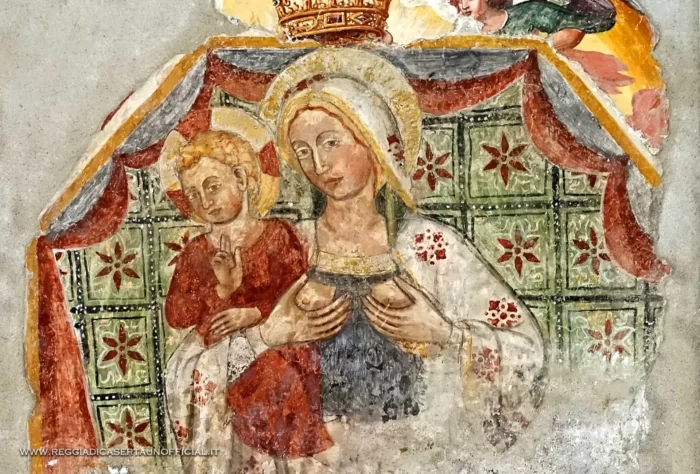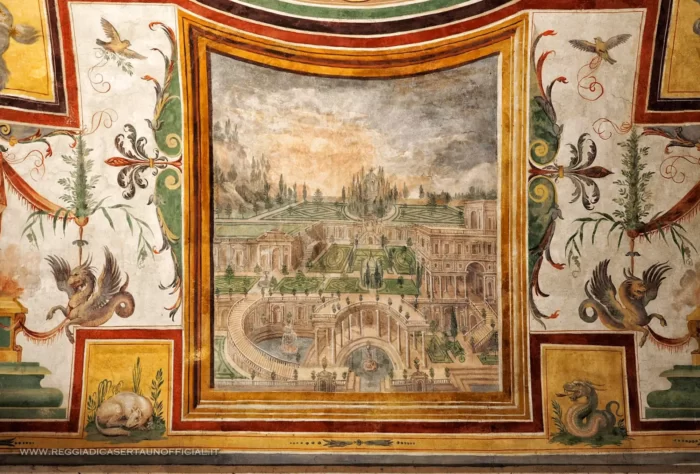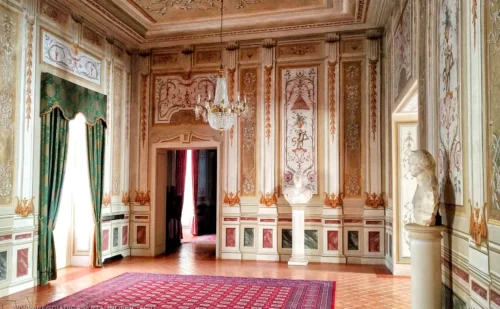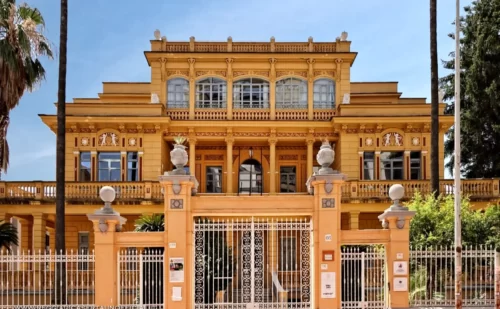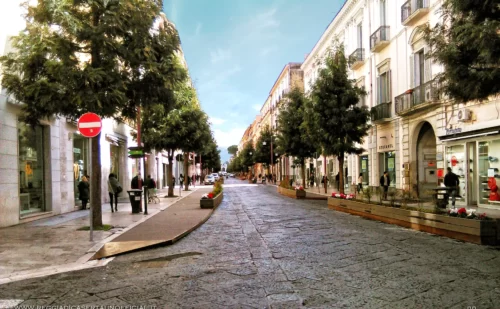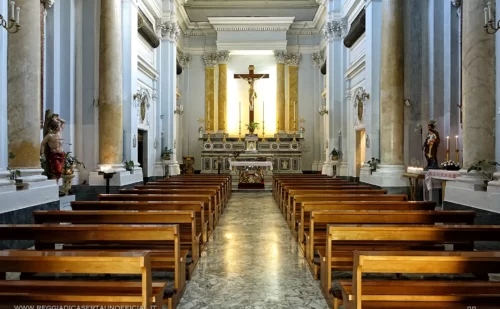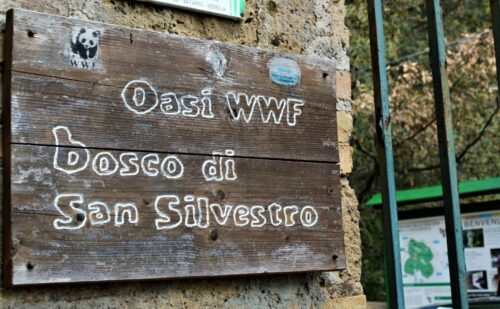Find out what to see in the city and in the surroundings of Caserta beyond the Royal Palace of Caserta
The city of Caserta at a glance
Capital of the province, Caserta is a modern city, born following the foundation of the grandiose Vanvitelli palace, commissioned by the Bourbons in the 17th century, even if the ancient city is what is now called Casertavecchia. Even if the majority of visitors visit the Reggia and leave, Caserta and its surroundings (not counting the province) are full of attractions that you can discover, in part, on this page because it is the classic city that ends up surprising. Leaving aside the magnificence of the Reggia, there is in fact the Middle Ages of Casertavecchia, the industrial utopia of San Leucio and the fashionable light-heartedness of the clubs in the centre.
The main artery of the center is Via Mazzini, which runs parallel to the fence of the royal residence; here you will find shops, clubs and restaurants. Casertavecchia and San Leucio are instead outside the centre, but can be easily reached by car or public transport.
The main attractions in the city of Caserta: what to see
Royal Palace of Caserta
The Royal Palace of Caserta is the largest royal palace in the world and was built by the Bourbons. To find out more just explore this website
Paternò Palace
The presence of the royal court in Caserta prompted many noble families to build their palaces in Caserta, both because of the duties at the court and to be able to live near the sovereigns. One of these families was that of the Sicilian noble Lorenzo Maria Paternò, who, having become president of the Royal Chamber and then minister of the War Council, and after his son's entry into the Bourbon government, in 1765 entrusted the architect Gaetano Barba with the creation of a palace near the Reggia.
Villa Vitrone
In the city there are not only the palaces of the golden age of the Bourbons: in via Renella, parallel to corso Trieste to the south (on the opposite side of via S. Carlo), stands for example the singular building of villa Vitrone, built in liberty style on the model of the colonial villas of South America.
Boschetto Palace
Palazzo al Boschetto is one of the two buildings of the pre-Bourbonic Caserta (the other is Palazzo Vecchio) In the seventeenth century the prince of Caserta Andrea Matteo Acquaviva had a quieter peripheral villa built with respect to Palazzo Vecchio (in Vanvitelli Square). Just as he embellished the pre-existing Palazzo Vecchio with frescoes, statues and gardens, he wanted the new one to have a stupendous garden full of avenues, statues, fountains, pergolas and aviaries and a pleasant grove from which the Palace later took its name.
Palazzo Vecchio (Old Palace)
The palace dates back to the 16th century and was owned by the Acquaviva d'Aragona, first counts and then princes of nearby Casertavecchia, who ceded it to the Bourbons at the same time as the start of construction work on the Reggia. The large building, which has over 140 rooms and today houses the offices of the Prefecture and the Police Headquarters of Caserta, welcomed the royal family on numerous occasions, on visits to supervise the construction site of the Reggia.
Corso Trieste
Returning to Corso Trieste; pedestrian area in certain hours of the day, you come across the historic shops and the most renowned cafés of the city. The Corso (originally called Corso Campano and then renamed Corso Umberto I), which in the 19th century was one of the most prestigious commercial and fashionable arteries of the Bourbon kingdom, ends after a straight path of over 1 km on Piazza IV Novembre, in correspondence of the war memorial, an imposing structure surmounted by a statue of Victory (1927).
Diocesan Museum
Set up in the rooms of the church of SS. Redentore, a short distance from the Duomo, the museum exhibits, among other works, liturgical furnishings, vestments and sculptures removed from the original churches following the 1980 earthquake, to protect them from theft and damage. The museum also displays around 200 works previously kept in the deposits of the Curia, including sculptural fragments from the 11th and 12th centuries, tombstones dating back to the period between the 16th and 18th centuries and an important collection of votive offerings.
War Memorial
The War Memorial of Caserta was created in the fascist period in homage to the fallen of the First World War. Made of marble, it has the shape of a triumphal arch and bears a bronze statue on top representing Liberty and Victory. There is also a bronze torch with perpetual light.
Charles de Bourbon square
This is the square in front of the Royal Palace of Caserta, and it is the largest in Italy.
Vanvitelli Square
Piazza Vanvitelli is dedicated to the royal architect Luigi Vanvitelli. In the center of the square there is a monument to Vanvitelli whose sculpture is a work of 1879 by Onofrio Buccini. The statue stands on a base decorated with bas-reliefs depicting the most important works created by the architect, including the Royal Palace of Caserta. It was formerly known as Piazza Mercato.
Dante Square
The central Piazza Dante, known in the past as Piazza Quattro Canti, is surrounded by arcades; here are the headquarters of the National Club (the oldest in the city, dating back to 1858) and the Social Club, important meeting places in the city.
St. Sebastian Church
Leaving piazza Dante on the left (via Mazzini), you skirt this church redecorated by Luigi Vanvitelli, which conserves some noteworthy works of art in the single nave inside, including the canvas of Sant'Elena in adoration of the Cross , from the second half of the 1600s and, on the right altar, a Madonna of the Rosary with Dominican saints attributed to Girolamo Starace.
Cathedral of the Archangel Michael
A short detour from via Mazzini, following via Redentore, leads to piazza del Duomo. Built to a design by Giovanni Fattarelli in 1822, the church is preceded by a portico enclosed by a gate. The interior is divided into three naves and contains some significant works: San Sebastiano (attributed to Girolamo Starace), The three Marys at the tomb, the Resurrection by Paolo de Matteis and a marble pulpit decorated with bas-reliefs.
The unmissable attractions near Caserta
A short distance from the Reggia is the medieval village of Casertavecchia, the ancient Caserta. Of Lombard foundation, dating back to the eighth century, it keeps its beauties intact: visiting the square with its suggestive bell tower, the Sicilian-Norman style Cathedral, the castle and the breathtaking panoramic points, one really gets the impression that time has stopped, and that walking along the pretty streets you can come across one of the auspicious spirits so famous among those who live in those places.
The Belvedere of San Leucio was wanted by the Bourbons. Here, in addition to the royal palace, a prestigious silk factory was built which still today supplies prestigious places such as the Quirinale or the White House. To regulate the life of the local community, in 1789, King Ferdinand IV of Bourbon promulgated a code of laws which then spread throughout the world, giving rise to socialism and equality between men and women.
The Carolino Aqueduct was designed by Luigi Vanvitelli to supply the Royal Palace, the city of Caserta and Naples, Carditello and all the farms in the area. The aqueduct is even 38km long, and crosses mountains and valleys, and is considered the most important European engineering work of the eighteenth century and one of the most important public works commissioned by the Bourbons.
The Oasis of San Silvestro was the ancient wood where the kings went hunting when they were in Caserta. Today it is a splendid WWF oasis where it is possible to do many activities in contact with nature and animals.
Activities and things to do in Caserta
Find out what to do in Caserta and surroundings
The city seen from above
Discover the city of Caserta seen from above with a drone
Guided visit to Caserta
Do you want to visit Caserta with a licensed tour guide? Request information about a tour.
This is only a form to request information, it does not imply an automatic reservation.
Find your hotel
Why wait until the last minute? Search now for your hotel in any city in Italy, Naples, Caserta, Sorrento, Capri etc


